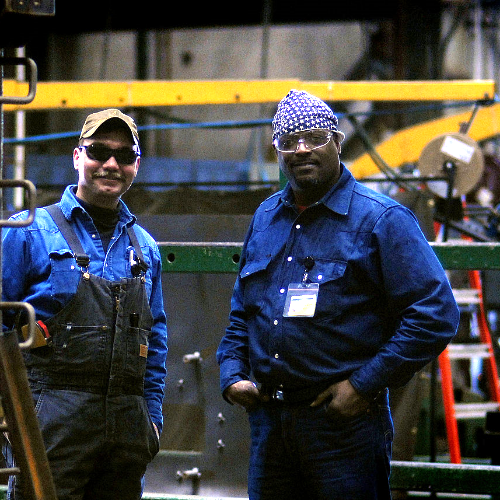The term “front line” first referred specifically to the line of soldiers closest to enemy territory or the enemy itself. Imagine, for instance, the legionaries of ancient Rome forming an unbroken wall of great red shields, leading rows upon rows of the army’s soldiers, pushing forward with incisive resolve, a mighty host of warriors dedicated to a solitary purpose.![]()
“‘Focus on the front line’ is a twofold concept: management’s focus on the front line and protecting it, and the front line’s focus on safe performance of their job tasks.”
These days, “the front line” often refers not to a literal line of soldiers but to a position or location with a higher degree of “exposure,” or a higher likelihood of hostility or danger (like proximity to an enemy) than other positions. Outside military use, particularly in workplaces, the term describes positions, occupations, or tasks that are characterized by direct involvement with, or exposure to, production processes or service provision, like retail clerks, healthcare staff, and trades, as opposed to supervisory or management positions. And of course, the term is common in industrial occupations to describe assembly line workers, food preparers, miners, equipment operators, fishermen, drivers, and so on.
However, there are obviously significant differences between the front line of soldiers and that of workplace employees. For one, the other side of the front line in warfare is an active and persistent threat of harm (an enemy), while the parts on an assembly line, for example, do not endeavor to harm those working on the line, though the risk of harm is present. By extension, any harm caused between enemies of war would not be accidental, while workplace injuries are never intended to occur. But a more crucial difference may be that the front line in an ancient Roman army was considered more expendable than the ranks coming behind: the front line was designed to weaken or tire the enemy before being able to breach it, then to allow for the stronger units to impede the enemy’s further advancement. In other words, losses to the front line were not only expected but occurred by design.

But in industry and business, the front line is not an expendable force; it is an integral one that needs to be protected. In fact, the Oxford dictionary describes a “front line” as “the most important or influential position” in a particular situation. And this is fundamentally true, especially when it comes to managing workplace safety and productivity.
Current research and practice in occupational health and safety shows that managing behavior to reduce risk is paramount to enhancing workplace safety, since policies and regulations require behavior to be effective (in other words, they must be followed). Recently, the Mine Safety and Health Administration has begun an initiative designed to increase miners’ focus on safety, as the holiday season can lead to distractions or cause attention to stray, especially when performing routine tasks. For instance, in December 2010, MSHA investigated four fatal mining accidents. As part of the initiative, MSHA is conducting training, walk-and-talks, and providing consistent reminders over the next several months designed to ensure mine employees’ focus on their own safety is not compromised by complacency or distraction.
Paralleling MSHA’s recent alert, Holly Mockus’ recent article for Food Manufacturing highlights the double-edged health and safety concern among the front line in that industry: both the health and safety of the workers themselves, but also that of the food they produce and put into the marketplace. Because of this, Mockus reaffirms the increasingly common sentiment that companies establish a culture of safety, in which safe work practices are persistently communicated among the workforce and regularly in the minds of the front line, so safe work occurs essentially by default. She writes,
“Smart companies…recognize the power of incorporating frontline workers in building a safety culture.” “The holiday season can lead to distractions or cause attention to stray, especially when performing routine tasks.”
So, “focus on the front line” is a twofold concept: management’s focus on the front line and protecting it, and the front line’s focus on the safe performance of their job tasks. As explored in previous Predictive Safety articles, policies and regulations may work to provide a road map for reducing incidents and creating safe workplaces, but policies and regulations do little on their own to manage the attitudes and behaviors of front-line employees. MSHA’s latest initiative seeks to improve front-line mine workers’ focus on their behaviors through active engagement and stressing that miners make deliberate, careful actions while performing job tasks, and MHSA advocates that company managers and supervisors themselves take the initiative in ensuring that front-line worker safety is not passive and static, but instead is actively managed through preventative measures and keen, unwavering focus on creating and sustaining a positive safety culture.
In any organization, when the focus is appropriately placed on and among the front line, the focus is also placed on employee safety and morale, as well as the company’s reputation and potential for growth. In other words, “focus on the front line” means a better bottom line—and a safer workplace.
More: The Ultimate Guide to Safety Culture




